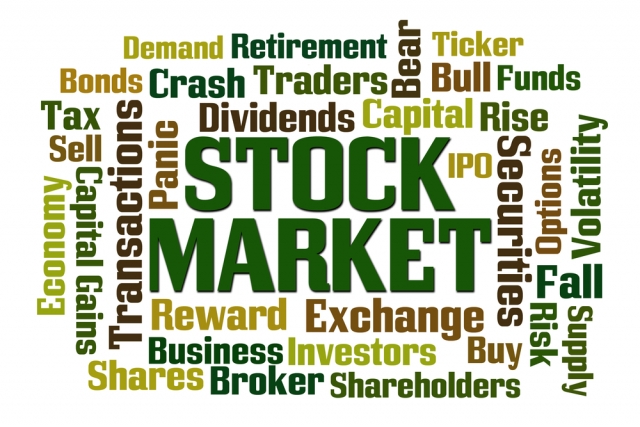Welcome to your next lesson in the How to Become a Better Investor in 15 Days series! In our previous lesson, we covered everything you need to know about creating your own investment strategy. Today, we’re going to cover the various styles of stocks so you can start to build your own investment strategy.
When you buy a stock, you own part of a public company. Companies sell stocks on the market to raise capital for growth and expansion. When investors buy a company’s stock, they are voting for that company’s continued growth.
There are two main types of stocks: common and preferred. In addition, stocks are divided by industry, company size, location and so on. Even if you don’t invest in every different type of stock, it’s important to understand them.
Here are the most common categories of stocks you will encounter as an investor and what each one means when growing your money.
Common vs. Preferred Stocks
If you log into your brokerage account to buy a few shares of stock today, chances are those will be common stock. These stocks entitle owners to a portion of a public company’s profits and the right to vote. 
You may also earn dividends, which is a distribution of a portion of a company’s profits to stock owners. While dividends can offer a nice stream of income, they are not guaranteed. Some companies cut dividends during downturns or if they want to focus on growth.
If a company fails and gets dissolved, common stockholders are entitled to receive a proportional share of the value of any assets that remain. If a company gets dissolved and there are no remaining assets, stockholders can lose everything they invested.
Preferred stocks are treated differently than common stocks. Shareholders who own a company’s preferred stock are entitled to receive dividend payments before common stockholders. In case the company gets dissolved, they will also receive preferential treatment when assets are distributed.
Shares of preferred stock experience less volatility, which means there’s less of a chance for a stock to lose value. On the flip side, the upside potential is also smaller. Because of these characteristics, preferred stocks are similar to fixed-income bond investments.
Most companies offer mainly common stock, which is traded at much higher volumes than preferred stock. Preferred stock is best suited for long-term investors looking for income over growth.
Value vs. Growth
Some investors like to focus on growth stocks while others prefer value stocks. Each one has its strengths and weaknesses as they behave differently during bull and bear markets.
Growth stocks are those issued by companies that are focused on growth and expansion. Many of them are young companies that are focused on building up revenue and getting to the top of their industries as quickly as possible.
As the company grows, the stock price should appreciate giving growth investors a good return on their money. Rising stock prices can continue to boost the price of the stock as it gets more investors who want a piece of the pie.
Stock from companies in the growth phase have high price-to-earnings (P/E) valuations, which is a common measurement for comparing stocks. The faster growth in revenue than other stocks in the same industry can offset this.
Unlike growth stocks, value stocks attract investors looking for a deal. While growth stocks have relatively high P/E ratios, value stocks have below-average P/E valuations, making them a bargain.
Value stocks tend to pay out dividends to shareholders, which can make them attractive to investors looking for income opportunities. Instead of reinvesting their profits into growing the company, management shares some of them with shareholders hoping to attract more investors.
Because value stocks are not focused on growth, you won’t see the wild swings that can accompany growth stock share prices. This can make them attractive to investors looking for less volatility.
When markets are up, growth stocks outperform value stocks. Value stocks hold up better during bear markets. Some investors buy a blend of value and growth stocks to capitalize on each of their strengths.
Large-cap, Mid-cap and Small-cap Stocks
Another series of terms you may encounter as an investor are large-cap, mid-cap and small-cap stocks. This is just a way of categorizing stocks based on the total worth of all shares also known as market capitalization and shortened to “market cap.”
There is no set cut off for the market cap terminology, but there are general guidelines. Most often, stocks with a market capitalization in excess of $10 billion are considered large-cap stocks. They are generally considered more conservative and thus safer investments as they can ride out the ups and downs of the market.
Mid-cap stocks are those with market capitalization between $2 billion and $10 billion. Unlike large-cap stocks, they have a greater capacity for growth but can also be riskier bets. However, even with large-cap stocks, there is no guarantee that a company will not fail.
Small-cap stocks are those with market capitalization valued at less than $2 billion. There are also micro-cap companies, which have even smaller market capitalizations than small-cap companies.
Companies with smaller market capitalizations have higher upside potential as they are in the growth phase. Investors looking for future growth favor these stocks, but they need to be ready for the added volatility.
Unlike large-cap companies, small-cap businesses have smaller financial results since they focus on reinvesting profits in the business. This means they have less cushion during market downturns and have a harder time absorbing losses.
Blue-chip stocks
When you see a reference to blue-chip stock, think of them as the best of the best. Stocks fall into the blue-chip category are established companies with strong reputations and a lengthy track record of positive returns.
Most analysts refer to the 30 companies that make up the Dow Jones Industrial Average as blue-chip stocks. These businesses are usually household names and include giants like Apple, Wal-Mart, and Coca-Cola.
Blue-chip stocks tend to have good financial reserves, modest debt, and a strong credit rating. They show strong growth over time with a promising future. Stock prices for these companies show long-term upward trajectory with good returns.
Penny Stocks
In contrast to blue-chip stocks, penny stocks are low-quality companies without an established track record. In fact, they can be risky, and the price of their stock reflects that at less than $1 per share most times.
Investing in penny stock can be dangerously speculative and can cause the loss of most if not all invested capital. There are many scams promising investors thousands of dollars in gains from trading penny stocks.
Domestic and International Stocks
Domestic and international stock categorizations rely on the locations of the company’s headquarters.
For example, since Apple’s official headquarters are Cupertino, CA, this is a domestic stock. Nokia’s official headquarters are in Espoo, Finland, making this an international stock.
The geographic location of a stock does not correspond with the market for its products. Even though Apple is headquartered in the US, it sells its products all over the globe. In addition, the company has factories in other countries such as China.
The same goes for Nokia. Even though this is an international stock, and the company is based in Finland, you can find the devices in US stores and at distributors worldwide.
Because many companies now do business all over the world, it can be difficult to distinguish between domestic and international stocks. This also means that events in one part of the world may affect a US company clear across the globe if it has business dealings there.
The Bottom Line
When it comes to stocks, there are different ways to categorize them based on a variety of factors. While it’s important to understand and get a basic idea of what each category means, most investors will be better off investing in index funds rather than individual stocks.
Now that you have a good idea of the ins and outs of stocks, in our next lesson, we’ll be covering everything you need to know about bonds. Not quite as exciting (or volatile) as stocks, but still a very important part of your investment strategy. Stay tuned and we’ll see you soon.